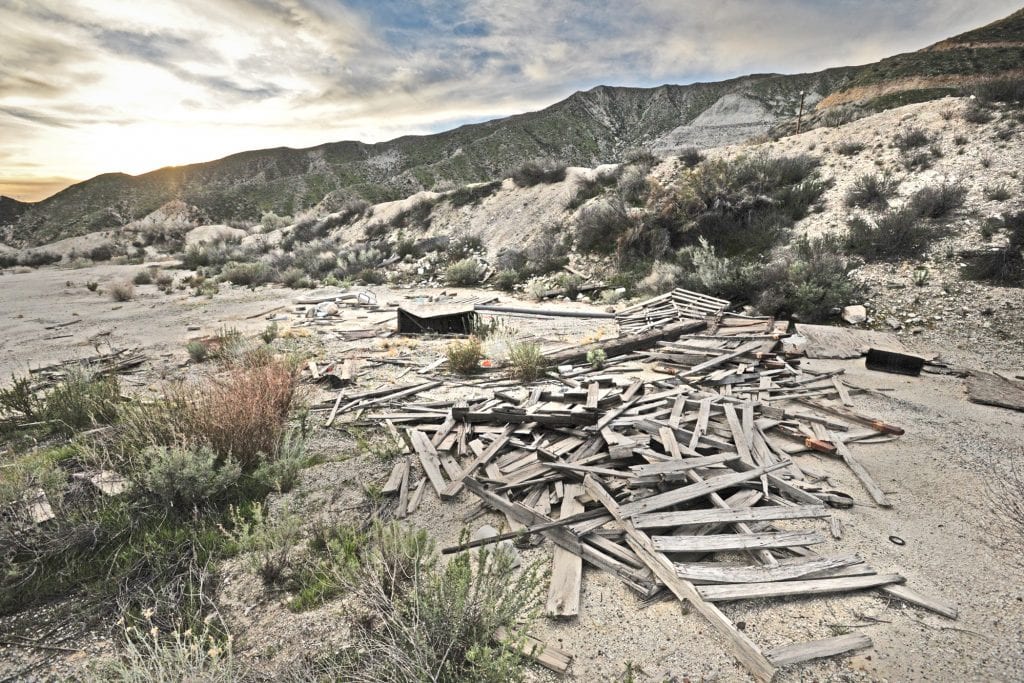A company looking to build a massive sand and gravel mine just east of Santa Clarita is suing the State Water Board in its latest attempt to get a permit needed to use the Santa Clara River in its plans to extract 56 million tons of aggregate from Soledad Canyon.
The lawsuit means the city, State Water Resources Control Board and residents will have to wait until after the lawsuit is resolved for any answers on whether they’ll get a chance to discuss any potential concerns that might be related to putting such an operation next to a river that’s been called “one of the last natural rivers in Southern California” and a critical water resource.
“Due to pending litigation, we cannot comment at this time,” according to an email from Maryssa Silva, a spokeswoman for Cemex, on Thursday.
A Cemex complaint set for an L.A. County Superior Court hearing in April states:
“On June 1, 2023, the board … determined that Cemex’s application should be re-noticed (the ‘decision to re-notice’), reopening a protest period that was originally closed in 1993,” according to the filing. “The decision to re-notice was issued specifically to allow a single entity (and primary opponent of CEMEX’s mining project) — the city of Santa Clarita (the ‘city’) — to file a protest, despite the city’s failure to timely file such a protest during the original notice period. The decision to re-notice is at odds with the board’s long history of denying the city’s repeated attempts to either re-notice, or altogether cancel, Cemex’s application.”
The city stated Thursday it’s not a party to the suit, but it’s aware of the situation and watching.
“We expect the State Water Resources Control Board to wait for the outcome of the pending litigation between the mining company and State Water Board before they proceed in re-noticing the water appropriation application,” Masis Hagobian, intergovernmental relations manager for the city of Santa Clarita, said when asked the city’s current stance.
Cemex alleged in the lawsuit that the State Water Board’s decision not to consider its request “constitutes a separate abuse of discretion.”
“‘In 2013, the director of the Department of Conservation concluded that development of the Soledad Canyon Project was in the ‘public interest’ based on a balancing of mineral reclamation and mineral conservation values, and ‘has many economic and environmental advantages over other options that have been explored in the region,’” according to the lawsuit.
The lawsuit shares the project’s timeline prior to its disputed permit application.
The 500-acre site has sand and gravel owned by the federal government and managed by the U.S. Bureau of Land Management, the suit explains.
“In 1990, CEMEX entered into two mineral material contracts (‘contracts’) with the United States of America to allow for the sale, permitting, and ultimately mining and production of 56.1 million tons of sand and gravel. Prior to issuance of the contracts, in 1989, the BLM chose to offer the mineral resources at the Soledad Canyon Project site for competitive sale and development, in part due to the strategic location in Los Angeles County and the importance and quality of the mineral materials at the site. In 1984, the Soledad Canyon area was classified … as the highest level under the state’s mineral classification scheme, for its high geologic quality and economic value. In 1986, the State Mining and Geology Board designated the Soledad Canyon Project site as containing regionally significant economic mineral resources.”
In 2004, the county certified an environmental impact report for the project and approved a land use permit and reclamation plan, according to the suit.
“All such environmental reviews and land use approvals have been challenged by the city, among others, in federal and state courts, and Cemex and the respective agencies have prevailed in all such lawsuits,” according to Cemex’s filing.
The lawsuit also states that attempts prior to June’s request for a renoticing of Cemex’s permit, the State Water Board “has consistently rejected requests” to do so.
However, political pressure in the form of a bill co-authored by Assemblywoman Pilar Schiavo, D-Chatsworth, and Sen. Scott Wilk, R-Santa Clarita, which called for the agency to re-notice any application more than 30 years old, seems to have ultimately helped.
In his veto of their bill, Gov. Gavin Newsom said that it was no longer necessary because the state agency was re-noticing the application.
The State Water Board has declined any request to comment on the lawsuit or the pending decision, citing a policy against ex parte communications, or communications outside of its board room, regarding any pending decisions.
The lawsuit cites the need for the high-quality aggregate that can be found in Soledad Canyon, while opponents, including Wilk, have cited a few of the concerns that could come with such a large-scale mining operation.
“Here are just some examples,” he wrote in a previous statement about his bill: “18-wheelers and gravel trucks would be entering and departing from the mine every two minutes, putting an additional 1,200 trucks on our local roads every day; our air quality would be destroyed due to dust created by the mine that would exceed acceptable levels by nearly 200%; the precious water our communities rely on would be threatened.”
The amount of water sought in the permit would be up to 322 acre-feet per year, which is nearly 105 million gallons. For perspective, an Olympic-sized swimming pool has about 500,000 gallons.
The next court date for the Cemex lawsuit is April 24.








